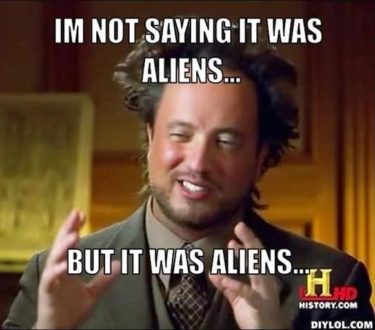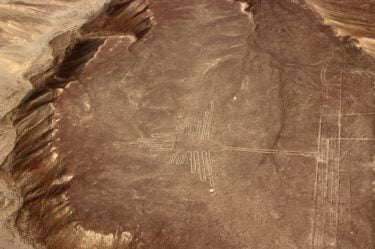A lot of summer vacations in 2021 seem very likely to be UK-based, as holidaymakers are thought likely to be put off by 10-day quarantines in a hotel upon their return from a trip abroad.
This should be excellent news for Blackpool, one of the UK’s most popular seaside resorts and a destination I have enjoyed visiting on numerous occasions, with highlights including a gigantic roller coaster, the largest waterpark in the UK, the addictive two-penny coin pushers and the famous Illuminations.
In case you’re wondering whether The Skeptic has been hijacked by Blackpool tourist board, I’ll admit also that Blackpool has suffered in recent years – or decades – and that a visit to the town can also give the visitor the opportunity to watch topless men in cowboy hats fight drunkenly in the street, outside seedier bars in parts of town that have seen better days.
The redevelopment of Blackpool has therefore been a perennial topic ever since its heyday, and the most recent plans are a doozy: a £300m scheme featuring a Chariots of the Gods Entertainment Park.
Chariots of the Gods? (it lost its question mark in later editions) is a 1968 book by Swiss author Erich von Däniken, which claimed that ancient civilisations were visited by and influenced by alien visitors, who were responsible for ancient monuments like the Easter Island Moʻai, the Egyptian Pyramids and Stonehenge. Supposedly these interstellar visitors also inspired ancient artworks and encounters with the aliens formed the basis of many religions.
If these ideas are strangely familiar to you, but you’ve not read the book, that’s because Chariots of the Gods was – and remains – hugely influential, as can be seen in everything from fictional TV shows like The X Files to… fictional TV shows like Ancient Aliens, plus the most annoying scene in Prometheus and the whole of the Stargate franchise.
It is also completely and utterly debunked. The arguments within Chariots of the Gods? hinge on incredulity that ancient civilisations were capable of such advanced technological and engineering feats. Adherents to this theory claim that it was impossible to construct the Egyptian Pyramids using contemporary building methods, when in fact the methods were described in Egyptian texts, and some of the support structures are even preserved at the pyramid at Meidum. Von Däniken also claims that these monuments appear suddenly and without explanation, when there is in fact a carefully documented evolution of the tombs, monuments and pyramids constructed over the course of 3,000 years of ancient Egyptian civilization. Sudden, it was not.
These aliens must have been pretty sketchy cartographers, which is a surprise considering they managed to travel trillions of miles to get here in the first place.
There’s also a lot of outright nonsense, like the suggestion that the Piri Reis map couldn’t have been created without being able to see the Earth from space. This is a very peculiar claim as although it is undoubtedly an impressive map for the time, large parts of the map don’t look all that like the land would from space, including a North American coastline that little resembles reality. These aliens must have been pretty sketchy cartographers, which is a surprise considering they managed to travel trillions of miles to get here in the first place.
Beyond being bluntly incorrect, this nonsense is problematic for several reasons. As long ago as 1975, academics HE Legrand and Wayne E Boese were concerned that their students were more interested in pseudoscientific fabrications filled with exciting, easy answers, rather than the “dry and cautious language of scholars, rarely…noticed by the layman”:
“From the perspective of von Daniken, all “mysteries” of the past are solved, all religion is clarified, and the inspiration for much of ancient art, architecture, and mythology is revealed by referring to visitors from outer space.”
Expert opinion gathered through thousands of hours of painstaking research is thrown aside for easy answers, and a society that prefers exciting fictions to cautious, dry evidence is probably not going down a good path.

A belief in these easy answers – aliens did it – has another problem. We are not giving sufficient credit to the skills of our ancestors, in an act of chronological snobbery:
“The presumption, inherited from the Enlightenment and given a scientific gloss by Darwinism, is that our technological sophistication somehow indicates our superior position in the eternal upward climb from barbarism. We today are superior technologically, scientifically, and—skipping over a number of premises—therefore morally.”
Given that humans have been anatomically modern for 300,000 years and behaviourally modern for perhaps 50,000 years, this is obviously nonsense. People were not stupid just because they lived in the past – or in a different country. This latter point is important with regard to Chariots of the Gods?, which in particular does not give credit to our forebears from outside the Greco-Roman world. Put more bluntly, these theories are pretty racist.
To be charitable for a moment, Chariots of the Gods? does briefly mention Stonehenge as one possible alien-influenced construction in Europe, among endless speculation about Egyptian, South American and Australian monuments. Alien influence is not suggested as the provenance of Classical Greek or Roman edifices, however, as Professor Chris Riedel notes:
“That’s what the ancient aliens theory does: it discredits the origins of civilizations, and almost entirely of non-white civilizations. People may suggest Stonehenge was built by aliens – but do the[y] suggest the Roman Forum or Parthenon were? No.”

Questions are raised by von Däniken as to how the creators of the Nazca Lines in Peru could – 2,000 years ago – form images that are so striking from the air, speculating that they are perhaps landing strips for alien spacecraft. Curiously, however, he saw no reason to doubt that Greek polymath Eratosthenes, in approximately the same era, found a way to measure the Earth’s circumference to 3% of the true value.
Such beliefs are not without consequence: pseudoscientific archaeological claims about Native American history, for example, were used to justify forced migration and the Trail of Tears in 19th Century America.
As palaeontologist Julien Benoit notes on these pseudoscientific beliefs:
“What’s the harm? Actually, there is great harm: firstly, these people try to prove their theories by travelling the world and desecrating ancient artefacts. Secondly, they perpetuate and give air to the racist notion that only Europeans – white people – ever were and ever will be capable of such architectural feats.”
It is a widely held view among academics that the ancient aliens theory is racist in practice, but is this enough to condemn Chariots of the Gods? and von Däniken himself?
Consider these quotes from von Däniken’s 1979 follow-up, Signs of the Gods:
“The evolutionists say that man descends from monkeys. Yet who has ever seen a white monkey? Or a dark ape with curly hair such as the black race has?”
“Was the black race a failure and did the extraterrestrials change the genetic code by gene surgery and then programme a white or a yellow race?”
The whole concept is steeped in racism, from the author’s own words, to how these concepts play out in the real world. Even Wilhelm Utermann, the German language editor of Chariots of the Gods, was a contributor to a Nazi newspaper in the 1940s.
What, then for Blackpool?
I am all in favour of any redevelopment of a fine town and tourist destination, but it is very hard to be enthusiastic about plans that carry quite so much baggage.
If the compulsory purchase plans are successful and the Chariots of the Gods park goes ahead, Blackpool Council might wish to take heed of the ultimate fate of Jungfrau Park in Switzerland. Another ancient aliens theme park, designed by Erich von Däniken himself, it was opened in 2003 and closed, due to lack of visitors and financial difficulties, just three years later.



